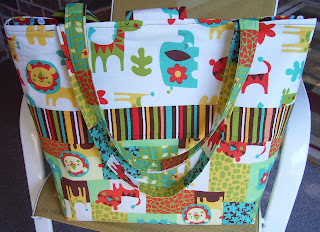- One Jelly Roll (you will not need all of it).
- Quilt Batting
- Heavyweight Interfacing 18" x 12"
- Lining one 18" x 12" and two 8" x 12"
- Velcro closure
Outside Design and Layers
Sew six 18" Strips together and press; Iron the fusible interfacing to the lining; layer the sewn jelly roll strips, quilt batting and interfaced lining. Machine quilt through all layers as desired.
Pockets for Inserting Journal Cover
 Cut two pieces of lining 8" x 12"; trim one edge of each piece with jelly roll strip. To make the double fold trim, cut one strip of 12" in half (1 3/4"). Fold wrong side together and press. Sew raw edges to raw edges of the lining; fold the strip over the edge and topstitch.
Cut two pieces of lining 8" x 12"; trim one edge of each piece with jelly roll strip. To make the double fold trim, cut one strip of 12" in half (1 3/4"). Fold wrong side together and press. Sew raw edges to raw edges of the lining; fold the strip over the edge and topstitch.
Fold Over Velcro Tab
Cut an 8" piece of jelly roll strip and an 8" piece of heavy interfacing; Iron on interfacing; Fold over right sides together, sew sides and turn right side out, press and top stitch. Attach one side of the velcro closure to the tab and the other side to the outside fabric. Pin the tab to the edge of the outside fabric.
Finishing
Pin lining pockets to right side cover and sew three sides, trim seams and corners and turn; Make a bookmark ribbon from double fold 15" x 1 3/4" jelly roll strip. Sew into place and top stitch center part of cover on edges.
I have made several of these. I like this method it is easy and fun and makes a pretty journal.
This one is for sale on my Etsy Shop. Bel Aire Village






